




GOTTFRIED HAIDER
hidden in plain sight
“hidden in plain sight” é uma meditação sobre a natureza da programação de computador. Enquanto um game de computador roda, tanto o jogo quanto o compilador que transforma código legível de programa em código executável de máquina estão sendo compilados. Esse ciclo sem fim e recorrente cria uma miríade de ambientes em 3D de curta duração, que têm o emblema do processo inscrito em suas paredes. O trabalho é basicamente uma peça de software (Quake III Engine modificado, compilador) que roda por conta própria, compilando incessantemente e executando mundos virtuais. Este maquinema é um vídeo gravado de uma dessas interações.
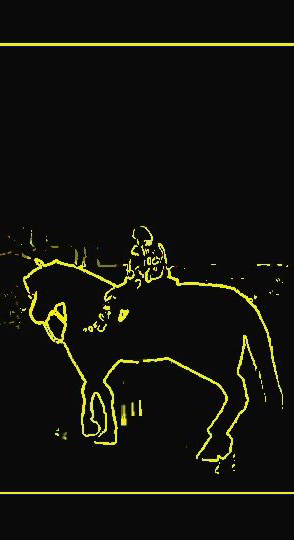
CHEVAUCHÉE NOCTURNE
Les Riches Douaniers
File Festival – Machinima
Dirigido em 2006 a partir de “Shadow of Colossus”, “Chevauchée Nocturne” (Passeio Noturno) mantém apenas as linhas de formas, usando duas cores, preto e amarelo, que permitem a customização extrema do trabalho. Este maquinema também refere-se à realidade, pelo aparecimento de duas reviravoltas silenciosas. A música e o som são muito importantes. Ambos participam do ritmo, criando expectativa, pois todo diálogo é deletado.
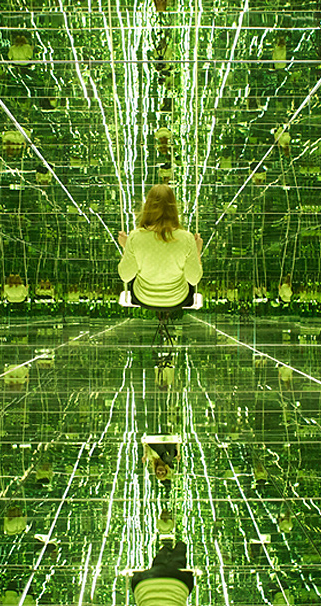
THILO FRANK
Тило Франк
the phonenix is closer than it appears
Thilo Frank (* 1978) lives and works in Berlin. His installations, sculptures and photo series lead the viewer into situations creating interactive physical dialogues. Physical phenomena and environments of our daily life are interpreted in a new context emphasizing our perception of light, space and motion in a poetic and playful way.
His works ask of a visitor to question one‘s relation to action in space and the consequences of one‘s action – an intimate experience.
The viewer functions as a coproducer of the work, perceiving his or her relational aspect as a instrument of measurement. The cognitive aspect in its work is enacted by the viewer, who through his physical reaction to the work, reflects himself to it. Through his physical interaction – the viewer completes the work.
Through the use of everyday technologies Thilo Frank explores the conventions of sight and movement and their visualization. Examination produces a type of measuring standard through which even seemingly random events are viewed equally. Through his works, an attempt is made to illustrate the optical coefficient and with this to analyse the space.
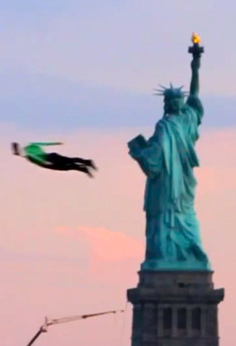
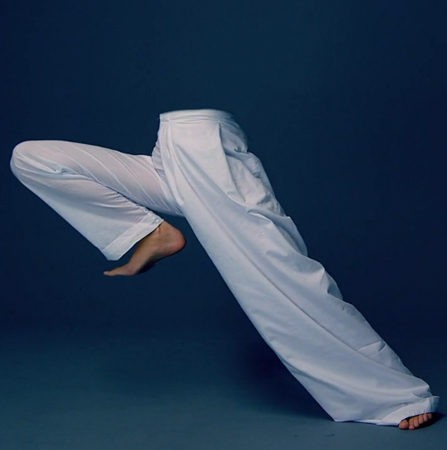
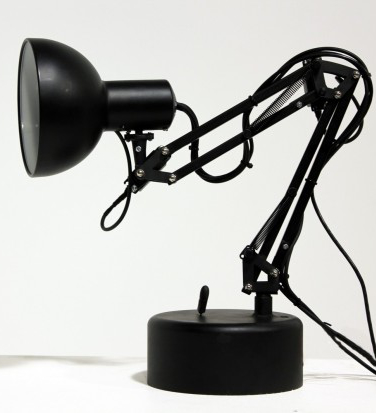
SHANSHAN ZHOU, ADAM BEN-DROR AND JOSS DOGGETT
Pinokio Lamp
Pinokio is an exploration into the expressive and behavioural potentials of robotic computing. Customized computer code and electronic circuit design imbues Pinokio with the ability to be aware of its environment, especially people, and to expresses a dynamic range of behaviour. As it negotiates its world, we the human audience can see that Lamp shares many traits possessed by animals, generating a range of emotional sympathies. In the end we may ask: Is Pinokio only a lamp? – a useful machine? Perhaps we should put the book aside and meet a new friend.
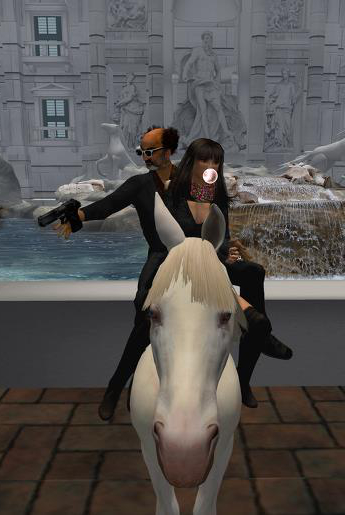

KIBISHIPAUL
Danse Macabre
Esta obra se inspirou em diversas fontes, mas a música do quarteto “A Morte e a Donzela”, de Franz Schubert, foi especialmente útil: “A donzela: Ah, me deixe! Prithee, me deixe! Terrível homem de osso! Pois a vida é doce, é agradável. Vá! Deixe-me agora em paz! Vá! Deixe-me já em paz! A Morte: Dê-me tua mão, oh, donzela bela ao olhar, Pois eu sou um amigo, apesar de minha aparência aflitiva. Tenha coragem agora, e muito em breve Em meus braços tu deverás repousar suavemente!”
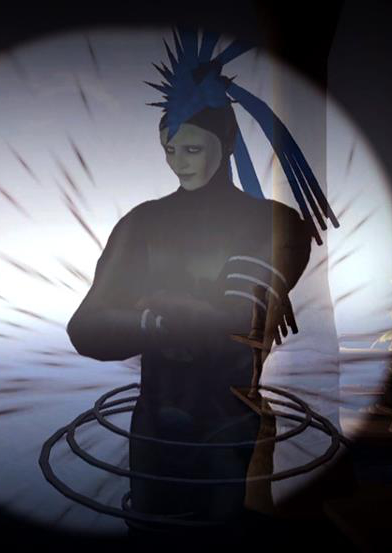

ESTEBAN DIÁCONO
Ólafur Arnalds – Ljósið
This project was inspired by two things: the wonderful music of the neoclasical icelandic musician Ólafur Arnalds and the incredibly awesome Trapcode Particular 2 plugin by Peder Nordby.
It started as an experimental take on an organic music visualizer. I used two color palletes (helped by my talented friend Sol Valladares) to visually separate the piano and the strings; the blue tones representing the melancholic part of the song and the warmer colors representing the hope and the joy.

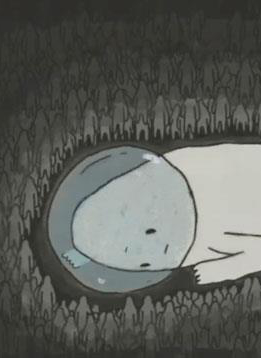
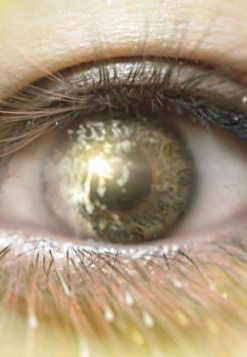
DAIHEI SHIBATA
The Light of Life
Life is transparent, warm and swirls randomly like a soft light. And it constantly changes…
Life illuminates itself and then it begins to illuminates a new life.
A sprouted mass of innumerable lights become a flow before long, and then become the part of the life-throb of ages.
That ties life, this moment now.
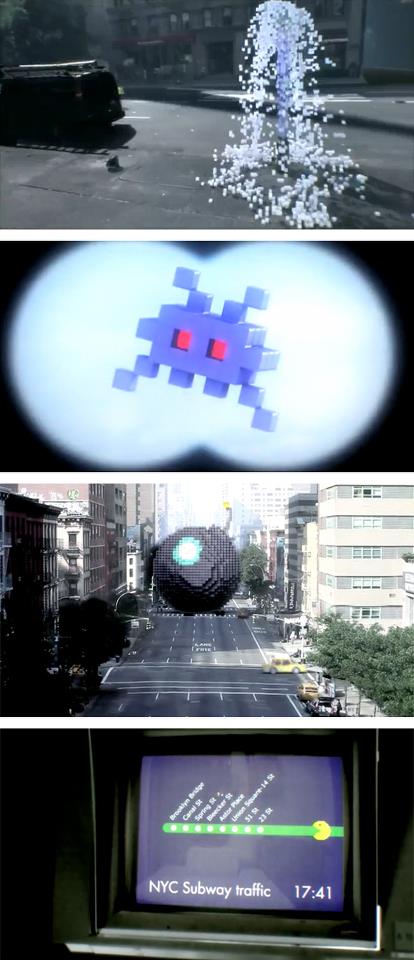


CINESTEIKA
Dina Khuseyn, Patrick K.-H., Oleg Makarov
A multivarious result of visual representation of 3 non-identical structures (dance performance, sound art and animation) points at interactivity as the main possible axis of reference. Necessity of this axis derives from specific interpretations that can only appear by juxtaposing of several systems. It opposes to traditional “parallelism” of media, employed in theater that only imitates causality, but having it already done before performance is starting.
In Cinestetika, each element of each media works as separate PROCESS, but also serves a SIGNAL to other medias. This essential core makes Cinestetika rather an instrument to make a term “live performance” filled with its perfect sense.

MARK JEFFERY AND JUDD MORRISSEY
The Precession 2011
via highlike submit
Judd Morrissey and Mark Jeffery are a collaboration merging live art and digital literary practices. The work, which is visual, textual and choreographic, evolves through context-specific research and practice and always considers the constraints of a given venue or occasion. Site responsive considerations include the performance/exhibition space as well as the local community and online textual activity happening within the locale. A given piece is a body of material that may have no singular fixed form but is alternately presented as internet art, durational live installation, an ongoing activity, or a performance of fixed length.


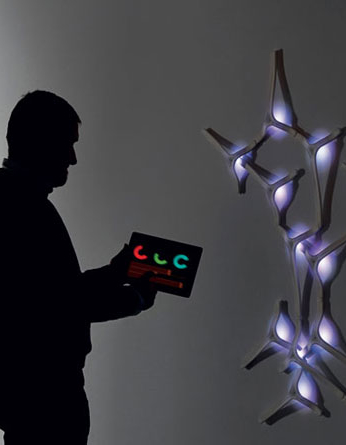
NODESIGN
waelice
“On ne peut pas laisser aux gens le simple rôle de payeurs” affirme Jean-Louis Frechin. Waelice en est une traduction, à mi-chemin entre l’œuvre d’art et l’objet interactif.
Ce système interactif de modules lumineux, reliés entre eux au sein d’un réseau informatique, forment une constellation au gré de la volonté de l’utilisateur. Les modules sont dotés d’une adresse IP, et l’utilisateur peut intervenir sur chacun d’eux afin d’en modifier l’intensité lumineuse et la couleur, et ainsi créer des combinaisons uniques et poétiques.
Cette action peut se faire à distance via un smartphone ou directement par une simple commande gestuelle, le luminaire étant équipé de capteurs permettant de lire les mouvements

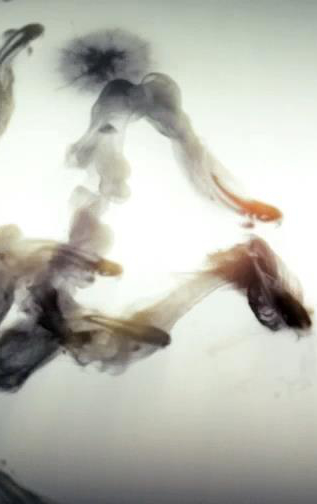

GAYBIRD
梁基爵
Digital Hug
File Festival – Hipersonica
The project is in collaboration with Henry Chu, Adrian Yeung, Thomas Ip, Joseph Chan, XEX GRP, and Hamlet Lin. It started from the fabrication of digital hubs but it turned out to make you feel like having an intimate hug, such is the chemistry coming from the new media performance “Digital Hug”. GayBird and his group of “musical frankensteins” developed a series of unconventional custom-made musical instruments and a responsive sound installation, which are played in complement to interactive video-mapping images and animation. Digital Hug emphasizes “new instruments for new music”, with the aim of bringing a unique and performative live electronic music performance to viewers.

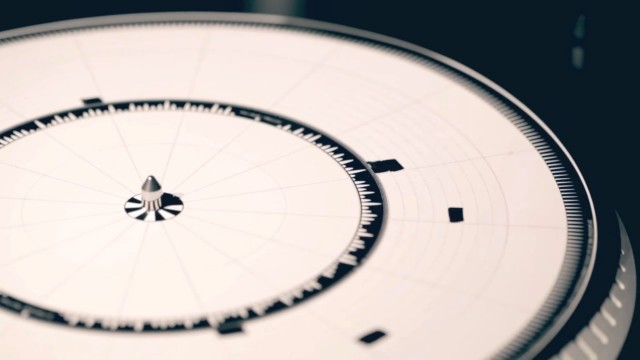
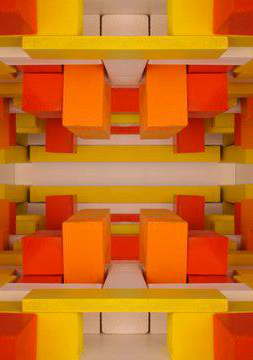
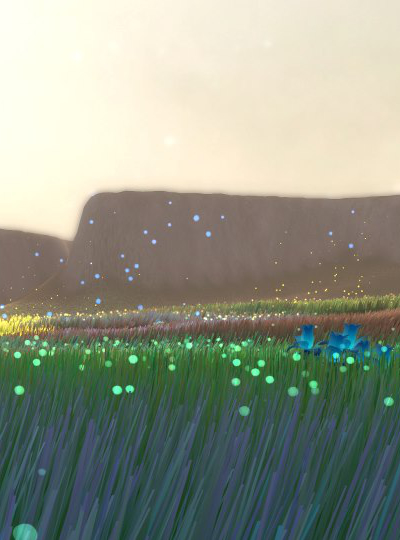


JULIAN OLIVER
朱利安·奥利弗
줄리안 올리버
ג’וליאן אוליבר
ジュリアン・オリバー
Джулиан Оливер
Levelhead
FILE FESTIVAL
LevelHead is a spatial memory game. The game takes its inspiration from the “Philosphical Toys” of 18th/19th century Europe and the memory systems (“memory loci”) of the ancient Greeks. levelHead uses a hand-held solid-plastic cube as its only interface. On-screen it appears that each face of the cube contains a little room, each of which are logically connected by doors. In one of these rooms is a character. By tilting the cube, the player directs this character from room to room in an effort to find the exit. Some doors lead nowhere and will send the character back to the room they started in, a trick designed to challenge the player’s spatial memory. Which doors belong to which rooms? There are three cubes (levels) in all, each of them connected by a single door. Players have as a goal to move the character from room to room, cube to cube, in an attempt to find the final exit door of all three cubes. If this door is found, the character will appear to leave the cube, walk across the table surface and vanish. Then the game starts over.

EDWIN VAN DER HEIDE
LSP
LSP ist eine Forschungsbahn, die die Beziehung zwischen Ton und dreidimensionalem Bild mittels Laserprojektion untersucht. 1815 beschrieb Nathaniel Bowditch einen Weg, visuelle Muster zu erzeugen, indem eine Sinuswelle für die horizontale Bewegung eines Punktes und eine andere Sinuswelle für die vertikale Bewegung dieses Punktes verwendet wurden. Die Form der Muster hängt von der Frequenz- und Phasenbeziehung der Sinuswellen ab. Die Muster sind als Lissajous-Figuren oder Bowditch-Kurven bekannt.
LSP interpretiert Bowditchs Arbeit als möglichen Ausgangspunkt für die Entwicklung von Beziehungen zwischen Ton und Bild. Da Sinuswellen auch zur Erzeugung reiner (hörbarer) Töne verwendet werden können, ist es möglich, eine direkte Beziehung zwischen Ton und Bild herzustellen. Frequenzverhältnisse in Ton, Verstimmung und Phasenverschiebung können ein direktes visuelles Gegenstück haben.
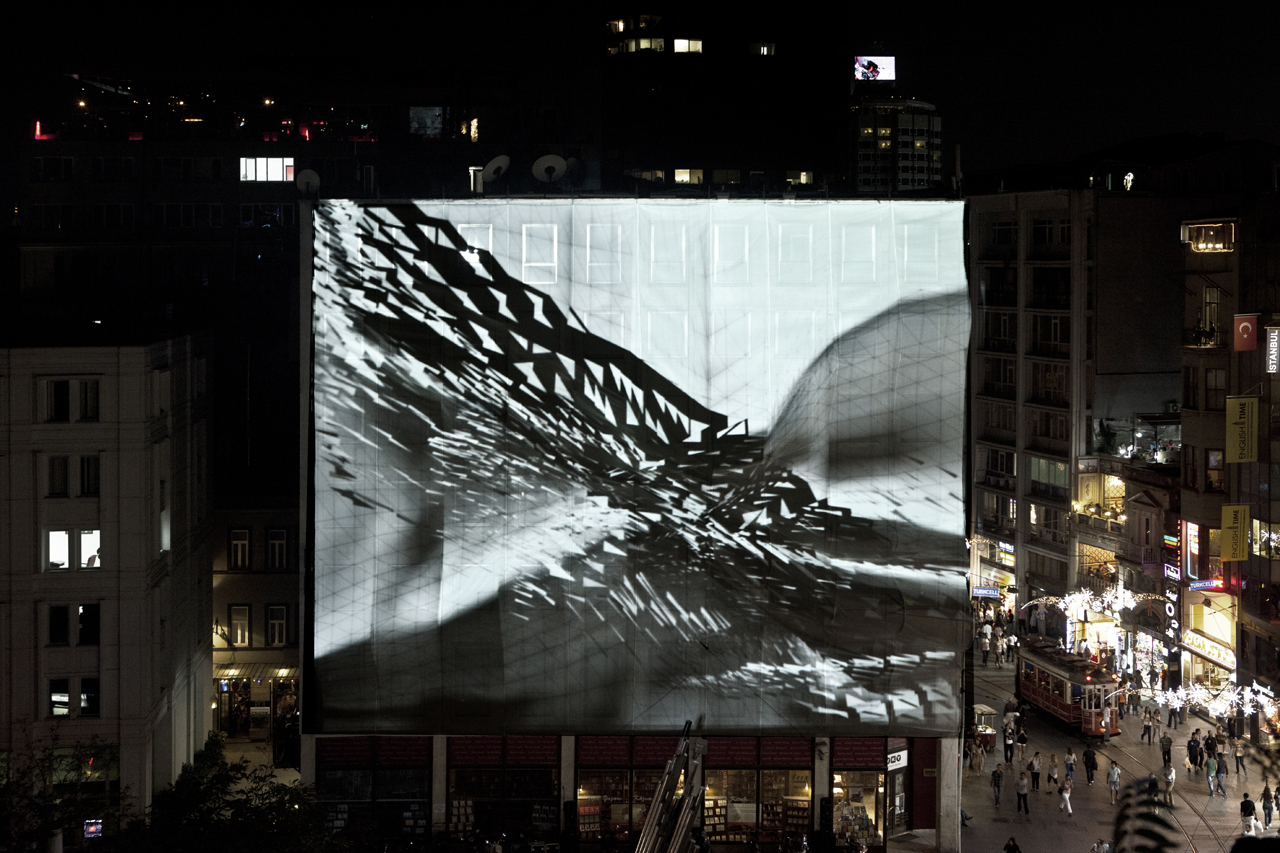
REFIK ANADOL
Augmented Structures v1 Acoustic Formations
Istiklal Street
“Augmented Structures v1.1 : Acoustic Formations/Istiklal Street” is an augmented data structure, a data installation by Refik Anadol and Alper Derinboğaz which is created through the use of innovative parametric architecture and audiovisual techniques. The projects deals with a new mediated space: How to translate the logic of media into architecture? In this first experiment field recordings of Istiklal Street will be transformed in to parametric architectural structure. The sound data recordings were made by Kerim Karaoglu who also used these recordings to create an electro-acoustical composition. The project seeks interactions between space, sound, visual, data and light. A similar connection between architecture and media has been experienced in Philips Pavilion of Le Courbusier in 1958.

REFIK ANADOL
Spatium
Aesthetics of failure. Disruption of dimension, magnitude and quantity in the timeless gap. Delicacy of destruction. In a void that serves a nonconventional level of perception.
This is the Spatium as a detachment of an interval in a moment of glitch. Superposing architecture with a malfunctioning device to be surrounded with. Spatium defines the possibilities what these spaces can transform into for the audience that is given the opportunity to experience.
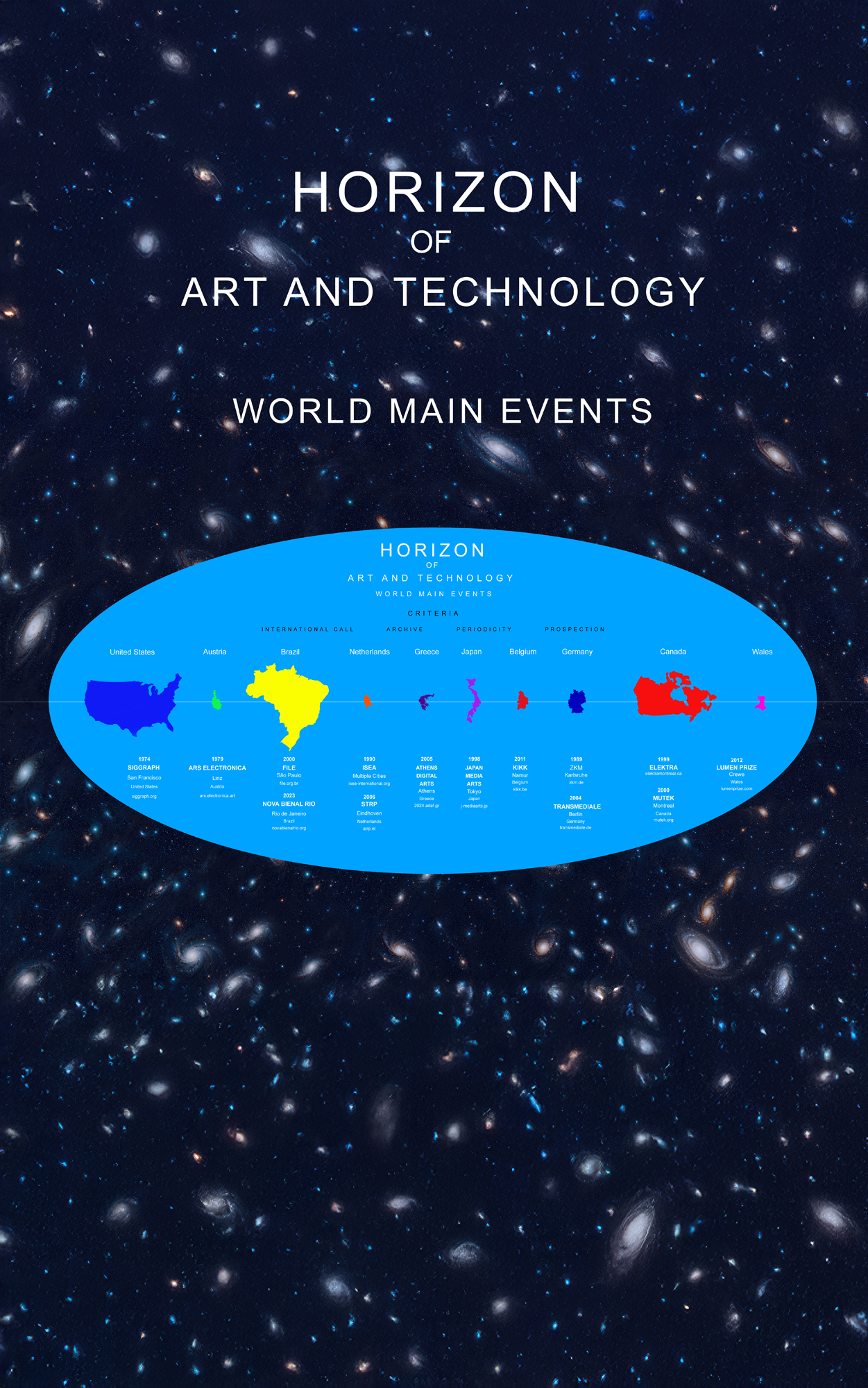
HORIZON of Art and Technology: World Main Events
SIGGRAPH
San Francisco, United States (https://www.siggraph.org/)
ARS ELECTRONICA
Linz, Austria (https://ars.electronica.art/news/en/)
FILE
São Paulo, Brazil (https://file.org.br/)
NOVA BIENAL RIO
Rio de Janeiro, Brazil (https://novabienalrio.org/)
ISEA
Multiple Cities (https://www.isea-international.org/)
STRP
Eindhoven, Netherlands (https://strp.nl/)
ATHENS DIGITAL ARTS
Athens, Greece (https://www.adaf.gr/)
JAPAN MEDIA ARTS
Tokyo, Japan (https://j-mediaarts.jp/)
KIKK
Namur, Belgium (https://www.kikk.be/)
ZKM
Karlsruhe, Germany (https://zkm.de/de)
TRANSMEDIALE
Berlin, Germany (https://transmediale.de/en)
ELEKTRA
Montreal, Canada (https://www.elektramontreal.ca/)
MUTEK
Montreal, Canada (https://mutek.org/)
LUMEN PRIZE
Crewe, Wales (https://lumenprize.org)
Inspired by thetruesize.com
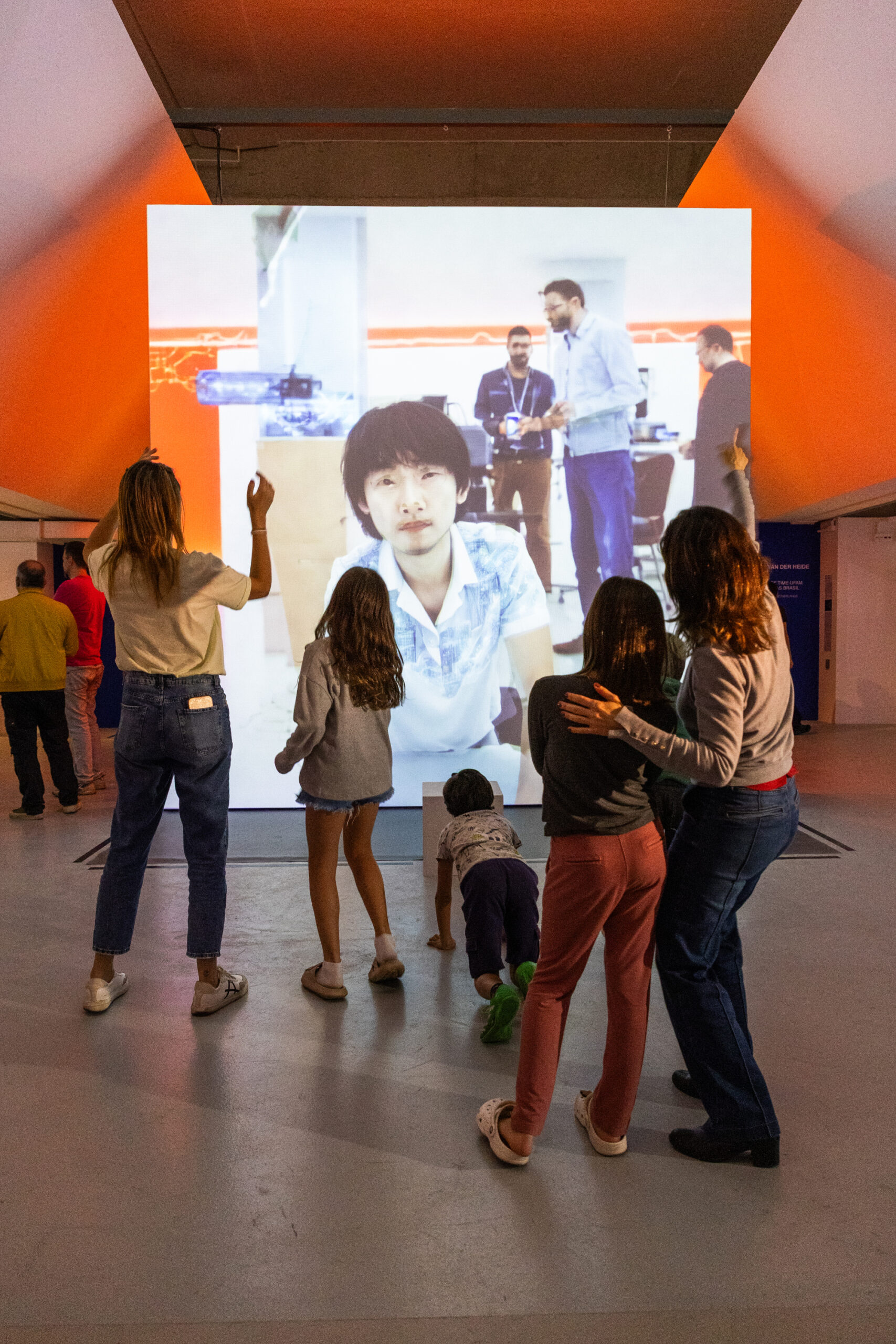
FILE SÃO PAULO 2025: SYNTHETIKA – Daito Manabe and Kyle McDonald
TRANSFORMIRROR
Daito Manabe and Kyle McDonald
FILE SÃO PAULO 2025: SYNTHETIKA – Art and Technology – Installations
Electronic Language International Festival
Transformirror – Japan | United States
When everything is imagined by AI—from music and images to prompts and titles—what’s it like to look in the mirror? This seminal study of real-time image generation, made possible in 2023 with Stable Diffusion XL-Turbo and Stable Audio, explores the future of media and interactivity. Can we better understand these systems by interacting with them physically, in real time?
BIO
Kyle McDonald creates immersive audiovisual installations and performances using computer vision, machine learning, and creative programming techniques to explore connections and shared futures between human beings. Daito Manabe combines technology and physical expression in collaborations such as Perfume and ELEVENPLAY with MIKIKO. Founder of Rhizomatiks, he has directed projects such as the closing ceremony of the Rio 2016 Olympics.
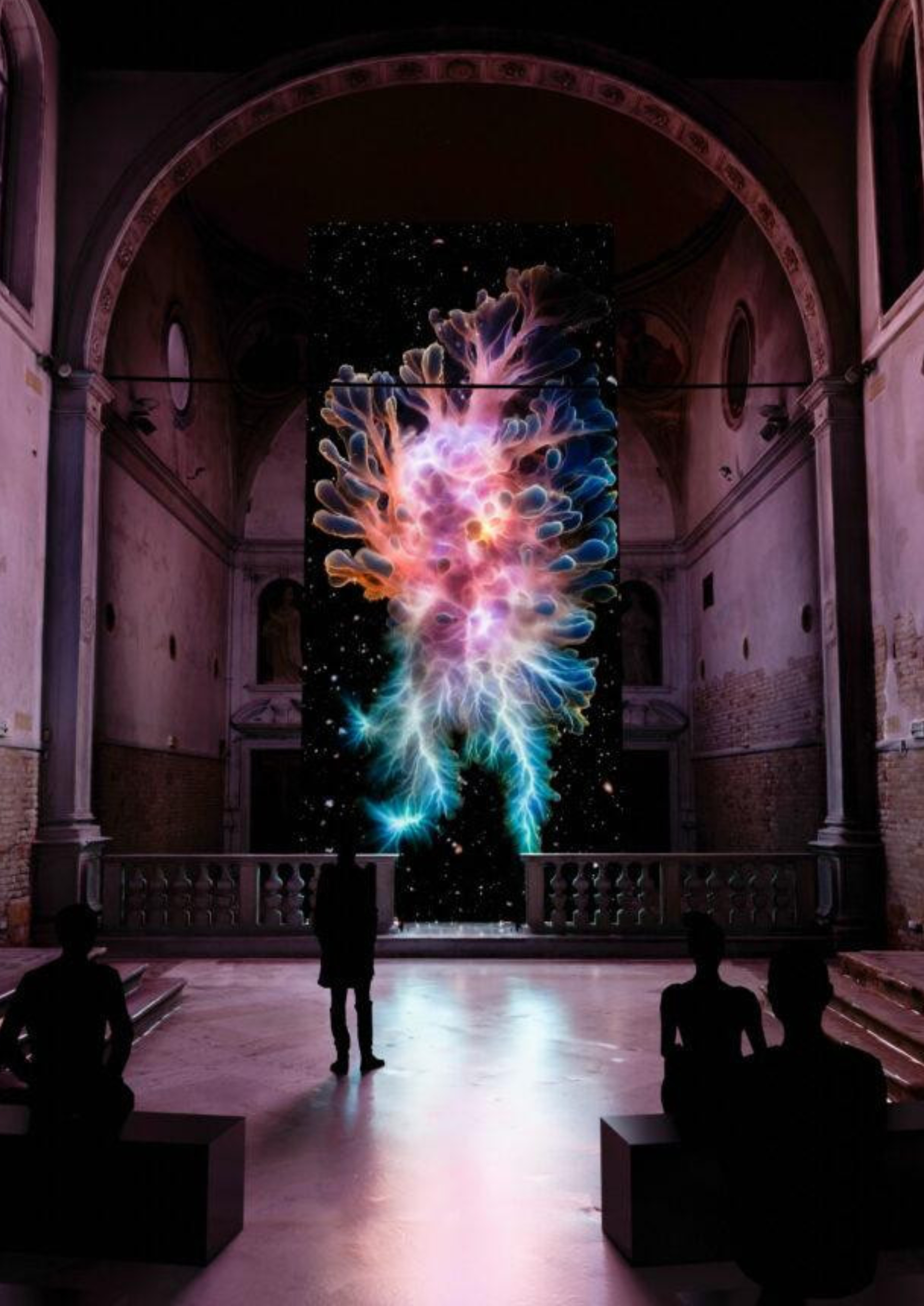
FILE SÃO PAULO 2025: SYNTHETIKA – Memo Akten & Katie Peyton Hofstadter
Boundaries
Memo Akten & Katie Peyton Hofstadter
FILE SÃO PAULO 2025: SYNTHETIKA – Art and Technology – Installations
Electronic Language International Festival
Boundaries – United States
Boundaries is a monumental work that explores the illusion of separation—between self and other, body and environment, matter and mind—and reflects on the interconnectedness of all things, from microorganisms to atoms forged in extinct stars. Created with custom code, AI, computer vision, digital painting, and dance, the work unites technology and bodily expression in an intimate and contemplative experience.
BIO
Memo Akten, a Turkish artist, musician, and researcher based in Los Angeles, creates speculative simulations about the relationship between humans and machines. With a PhD from Goldsmiths, he is a pioneer in the creative use of neural networks under human control. Katie Peyton Hofstadter is an artist, writer, and curator. Her work investigates the intersections between embodiment, technology, and consciousness, exploring how technologies shape cultural narratives and sensory experience.
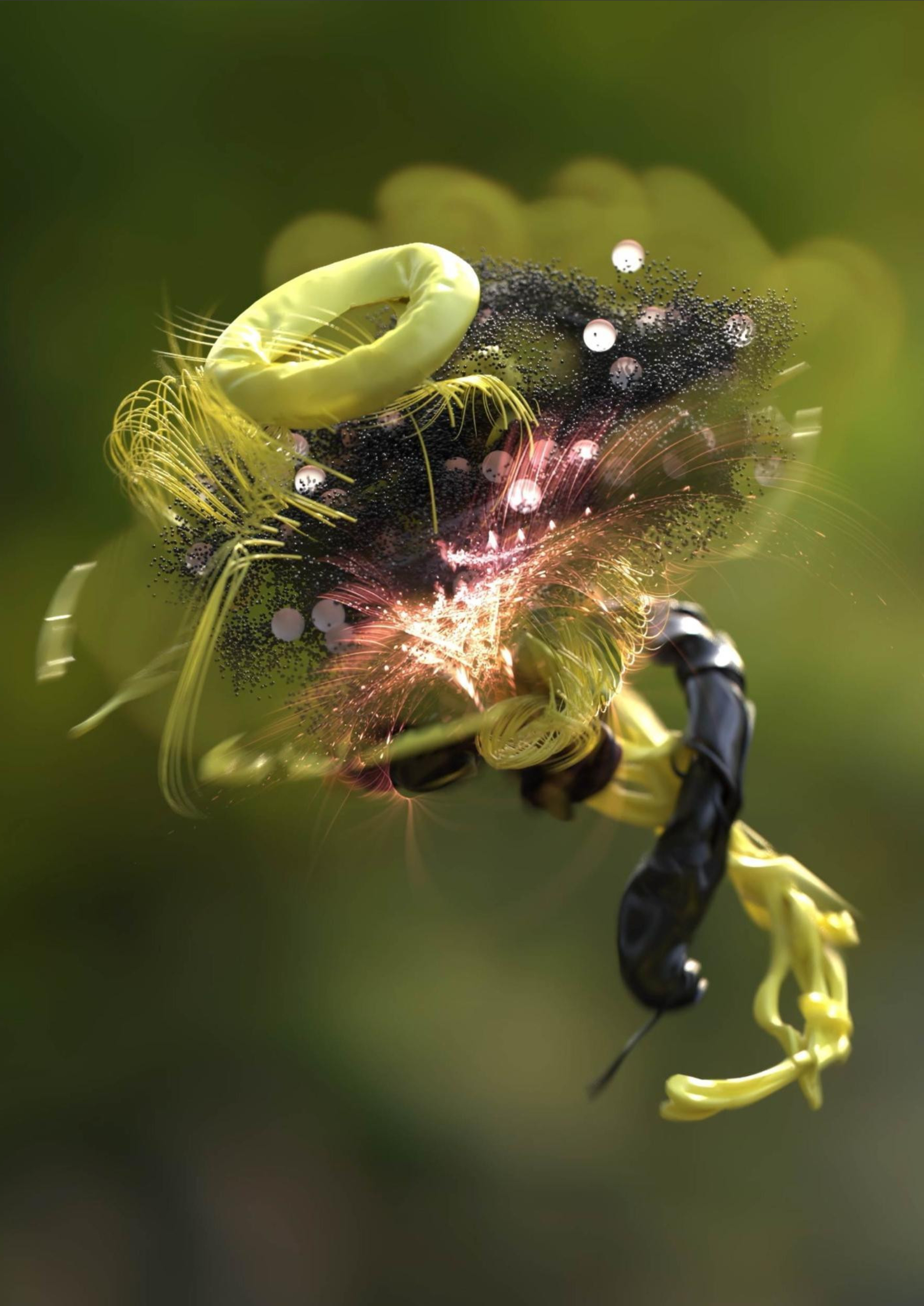
FILE SÃO PAULO 2025: SYNTHETIKA – Andy Thomas
Visual Bird Sounds
Andy Thomas
FILE SÃO PAULO 2025: SYNTHETIKA – Art and Technology – INTERATOR
Electronic Language International Festival
Visual Bird Sounds – Australia
Visual Bird Sounds transforms bird songs and sounds into computer-generated 3D visualizations. The recordings are converted into animated figures that resemble living digital organisms—like virtual representations of the birds themselves. The work invites the audience to reflect on the beauty of nature and the urgency of preserving its habitats.
BIO
Thomas is an artist specializing in the creation of “sonic lifeforms” and creative sound visualization. He collects recordings and images of birds and other animals on expeditions to remote regions, transforming these data into videos and digital works. His work unites science and art by fusing elements of flora and fauna into abstract visual compositions.
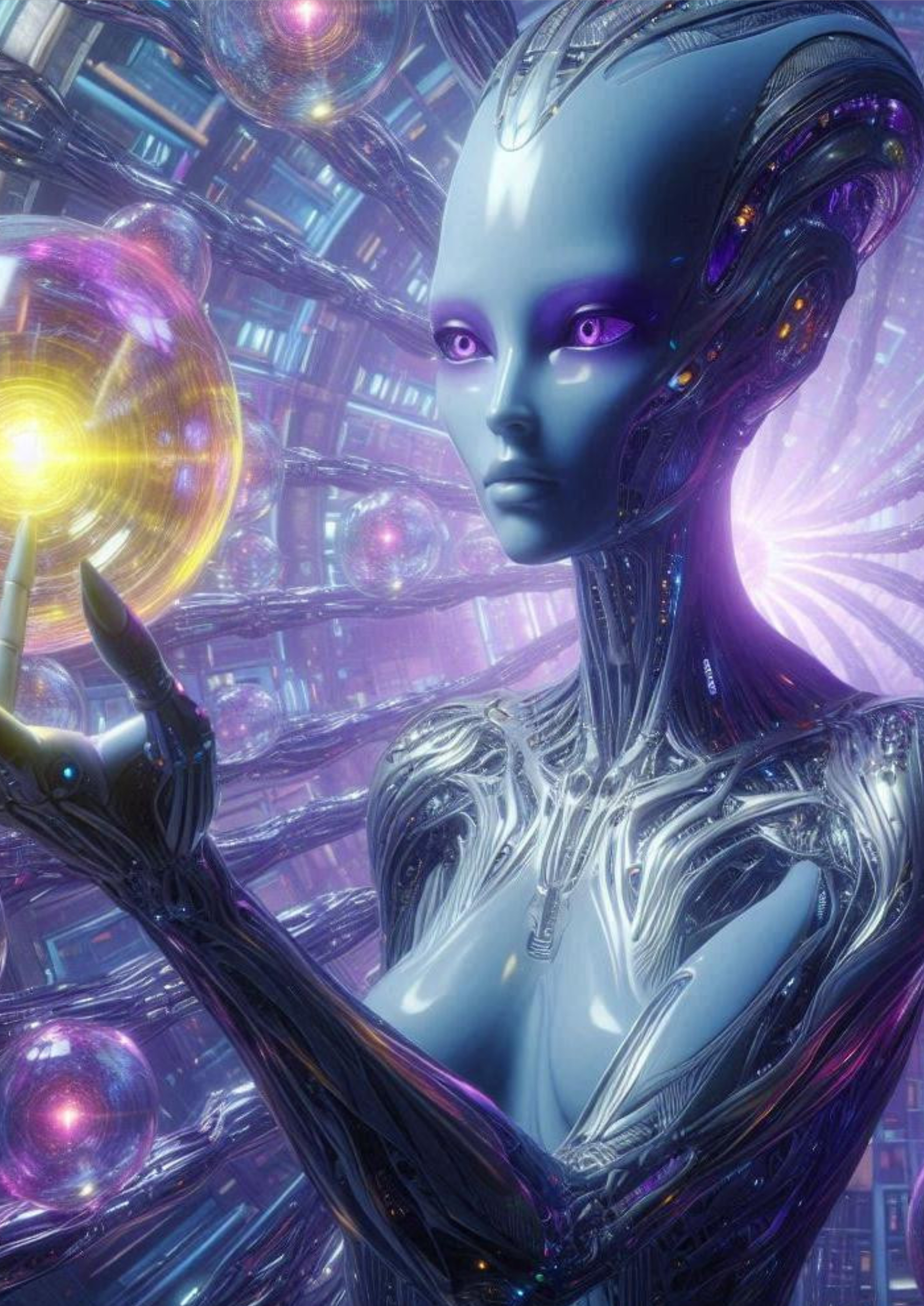
FILE SÃO PAULO 2025: SYNTHETIKA – Darren Slater (DSM)
Darren Slater (DSM)
FILE SÃO PAULO 2025: SYNTHETIKA – Art and Technology – INTERATOR
Electronic Language International Festival
BIO
Darren Slater is a musician and amateur visual artist based in the UK. He composes cinematic soundtracks in ambient and techno-house styles with sci-fi inspiration, using attribute-free loops and sound effects. He uses Krea AI Animator to bring AI-generated images to life, creating immersive experiences. He also works as a traditional artist, painting fantasy worlds with brushes and pigments.

FILE SÃO PAULO 2025: SYNTHETIKA – Darren Slater (DSM)
Darren Slater (DSM)
FILE SÃO PAULO 2025: SYNTHETIKA – Art and Technology – INTERATOR
Electronic Language International Festival
Trip Portal – United Kingdom
Portal Trip is a captivating fusion of original music and Darren Slater’s AI-generated animations, transporting viewers on a surreal journey through ever-shifting dimensions. As abstract portals open and dissolve into fluid landscapes, the hypnotic visuals synchronize with Darren’s immersive soundscapes, creating an audiovisual experience that feels like entering another reality. A mesmerizing blend of movement and sound, this video invites viewers to lose themselves in its dreamlike, otherworldly depths.
BIO
Darren Slater is a musician and amateur visual artist based in the UK. He composes cinematic soundtracks in ambient and techno-house styles with sci-fi inspiration, using attribute-free loops and sound effects. He uses Krea AI Animator to bring AI-generated images to life, creating immersive experiences. He also works as a traditional artist, painting fantasy worlds with brushes and pigments.
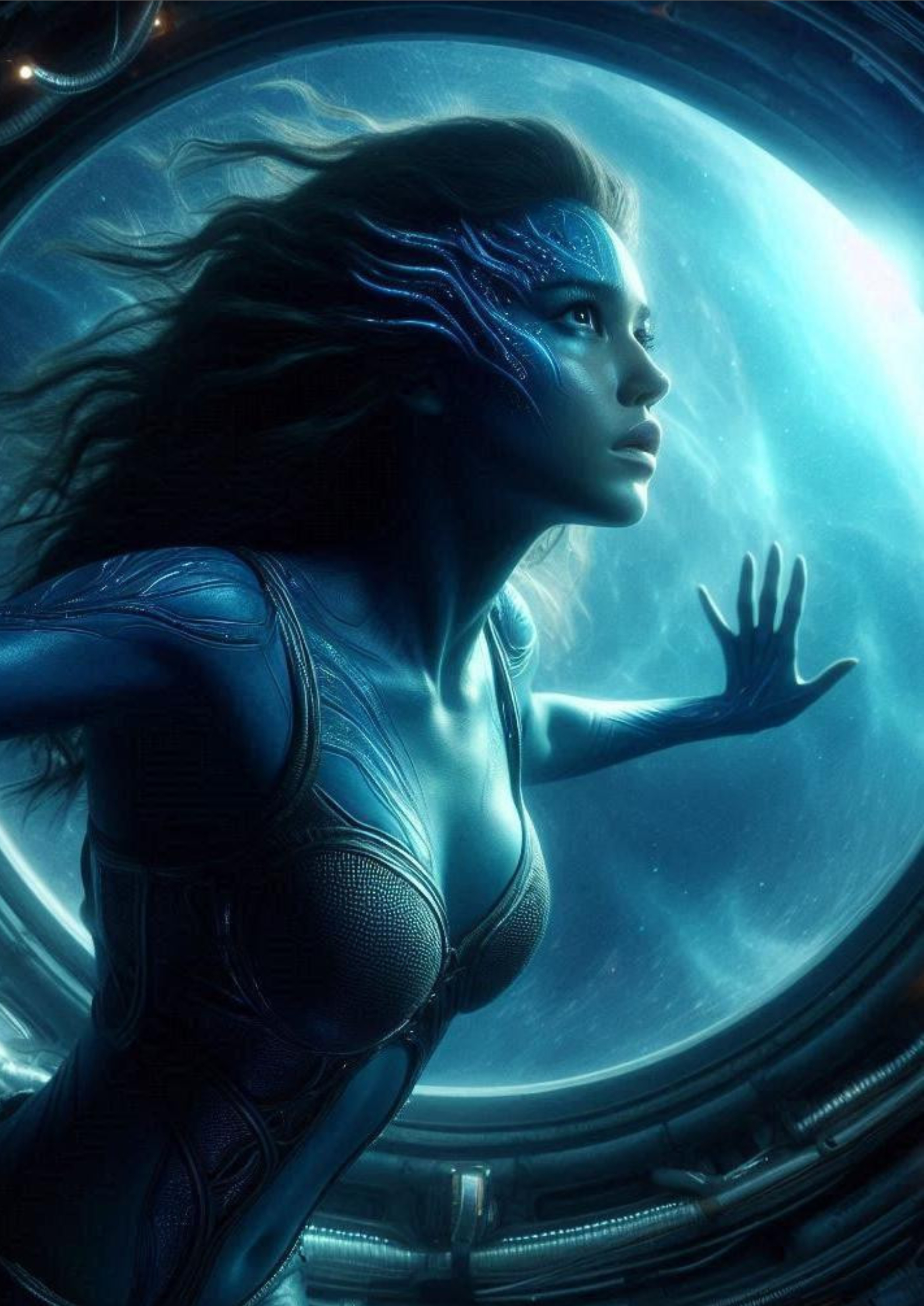
FILE SÃO PAULO 2025: SYNTHETIKA – Darren Slater (DSM)
Pods
Darren Slater (DSM)
FILE SÃO PAULO 2025: SYNTHETIKA – Art and Technology – INTERATOR
Electronic Language International Festival
Pods – United Kingdom
Pods is an atmospheric fusion of original music and Darren Slater’s mesmerizing AI-generated visuals. This 4K video takes viewers on a surreal journey through an abstract world filled with floating organic forms and fluid transformations. The sci-fi-inspired imagery and immersive soundscape complement each other perfectly, creating an otherworldly audiovisual experience that lingers in the imagination.
BIO
Darren Slater is a musician and amateur visual artist based in the UK. He composes cinematic soundtracks in ambient and techno-house styles with sci-fi inspiration, using attribute-free loops and sound effects. He uses Krea AI Animator to bring AI-generated images to life, creating immersive experiences. He also works as a traditional artist, painting fantasy worlds with brushes and pigments.
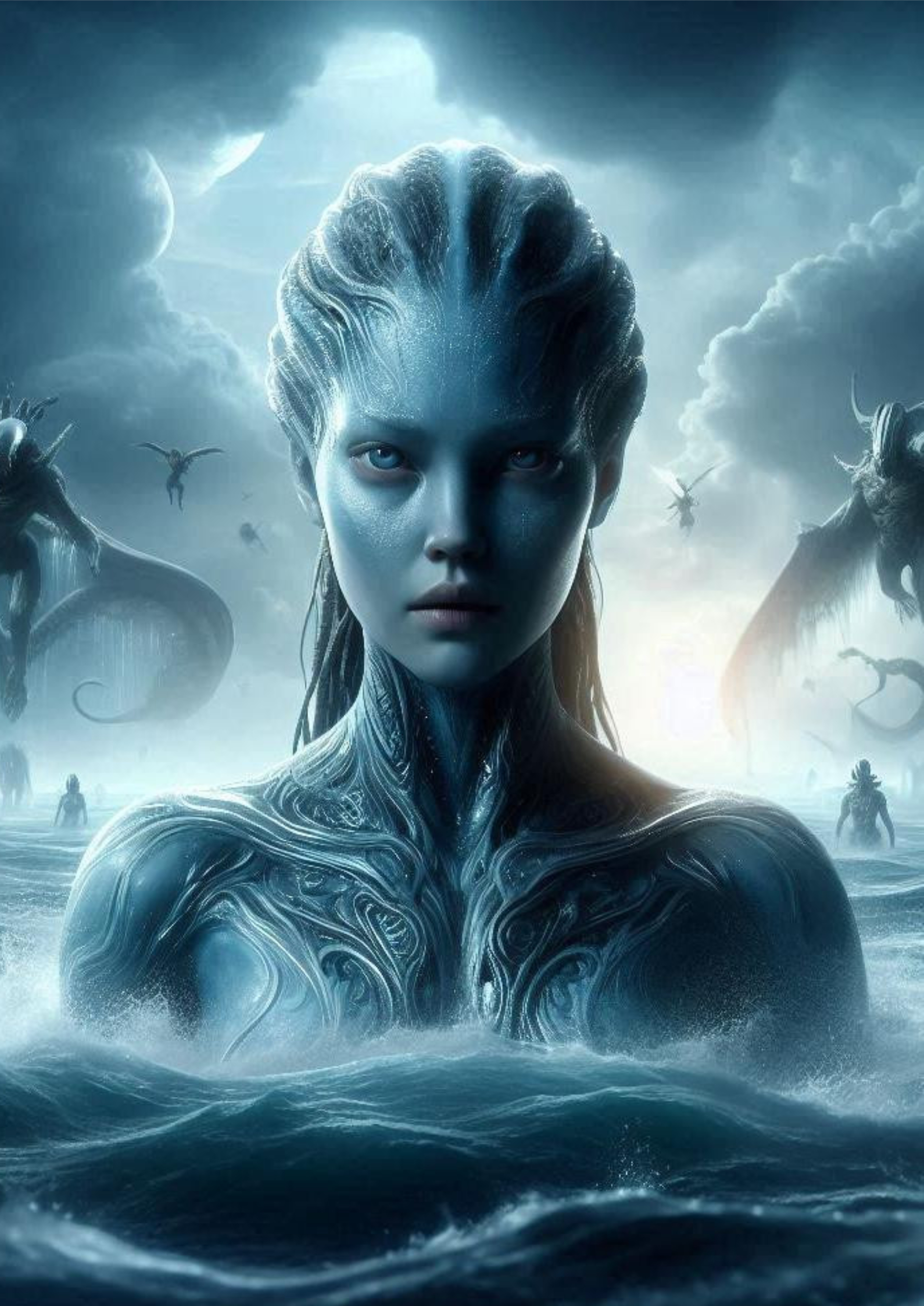
FILE SÃO PAULO 2025: SYNTHETIKA – Darren Slater (DSM)
Lakes of Skylands
Darren Slater (DSM)
FILE SÃO PAULO 2025: SYNTHETIKA – Arte e Tecnologia
Festival Internacional de Linguagem Eletrônica
Lakes of Skylands – Reino Unido
Lakes of Skylands é uma experiência imersiva de animação e música com inteligência artificial. O vídeo apresenta uma paisagem sonora original no estilo downtempo, cuidadosamente elaborada por Darren para complementar os visuais hipnotizantes gerados por IA. Por meio de movimentos fluidos e paisagens etéreas, a combinação de música e animação convida o público a um refúgio tranquilo e, ao mesmo tempo, de outro mundo.
BIO
Darren Slater é um músico e criador visual amador radicado no Reino Unido. Compõe trilhas cinematográficas nos estilos ambient e techno house com inspiração sci-fi, usando loops e efeitos sonoros livres de atributos. Utiliza o Krea AI Animator para dar vida a imagens geradas por IA, criando experiências imersivas. Também atua como artista tradicional, pintando mundos de fantasia com pincéis e pigmentos.

FILE SÃO PAULO 2025: SYNTHETIKA – Mario Klingemann
The Noise of Art
Mario Klingemann
FILE SÃO PAULO 2025: SYNTHETIKA – Arte e Tecnologia
Festival Internacional de Linguagem Eletrônica
The Noise of Art – Alemanha
Dançando pelo Espaço Latente
Mario Klingemann ama dançar — não profissionalmente — mas, sempre que o faz, tenta traduzir sua interpretação do movimento e dos gestos da música para o espaço multidimensional de seu corpo. Trabalhando com os espaços latentes de redes neurais, particularmente com GANs, encontrou um processo paralelo: traduzir som em imagens. A dança torna a música visível por meio do movimento; sua arte tenta fazer o mesmo com inteligência artificial, permitindo que a música molde imagens. As três obras em vídeo apresentadas — Freeda Beast — Bringing Things to an End (GAN generated beta) (2017), The Noise of Art (2020) e Liberation (2020) — são experimentos nessa tradução, cada uma criada de uma só vez por um código escrito por ele, que responde ao ritmo e ao clima das músicas. Bringing Things to an End, provavelmente um dos primeiros videoclipes totalmente gerados por IA no mundo, utiliza um modelo de geração de rostos treinado pelo artista.
Mario Klingemann é um artista e cético com uma mente curiosa. Seu trabalho explora a interseção entre arte e tecnologia, com foco em inteligência artificial, aprendizado profundo e estruturas algorítmicas, investigando continuamente os mecanismos internos tanto das máquinas quanto do processo criativo.
BIO
Mario Klingemann é um artista e cético com uma mente curiosa. Seu trabalho explora a interseção entre arte e tecnologia, com foco em inteligência artificial, aprendizado profundo e estruturas algorítmicas, investigando continuamente os mecanismos internos tanto das máquinas quanto do processo criativo.

FILE SÃO PAULO 2025: SYNTHETIKA – Mario Klingemann
Liberation
Mario Klingemann
FILE SÃO PAULO 2025: SYNTHETIKA – Arte e Tecnologia
Festival Internacional de Linguagem Eletrônica
Liberation – Alemanha
Dançando pelo Espaço Latente
Mario Klingemann ama dançar — não profissionalmente — mas, sempre que o faz, tenta traduzir sua interpretação do movimento e dos gestos da música para o espaço multidimensional de seu corpo. Trabalhando com os espaços latentes de redes neurais, particularmente com GANs, encontrou um processo paralelo: traduzir som em imagens. A dança torna a música visível por meio do movimento; sua arte tenta fazer o mesmo com inteligência artificial, permitindo que a música molde imagens. As três obras em vídeo apresentadas — Freeda Beast — Bringing Things to an End (GAN generated beta) (2017), The Noise of Art (2020) e Liberation (2020) — são experimentos nessa tradução, cada uma criada de uma só vez por um código escrito por ele, que responde ao ritmo e ao clima das músicas. Bringing Things to an End, provavelmente um dos primeiros videoclipes totalmente gerados por IA no mundo, utiliza um modelo de geração de rostos treinado pelo artista.
Mario Klingemann é um artista e cético com uma mente curiosa. Seu trabalho explora a interseção entre arte e tecnologia, com foco em inteligência artificial, aprendizado profundo e estruturas algorítmicas, investigando continuamente os mecanismos internos tanto das máquinas quanto do processo criativo.
BIO
Mario Klingemann é um artista e cético com uma mente curiosa. Seu trabalho explora a interseção entre arte e tecnologia, com foco em inteligência artificial, aprendizado profundo e estruturas algorítmicas, investigando continuamente os mecanismos internos tanto das máquinas quanto do processo criativo.
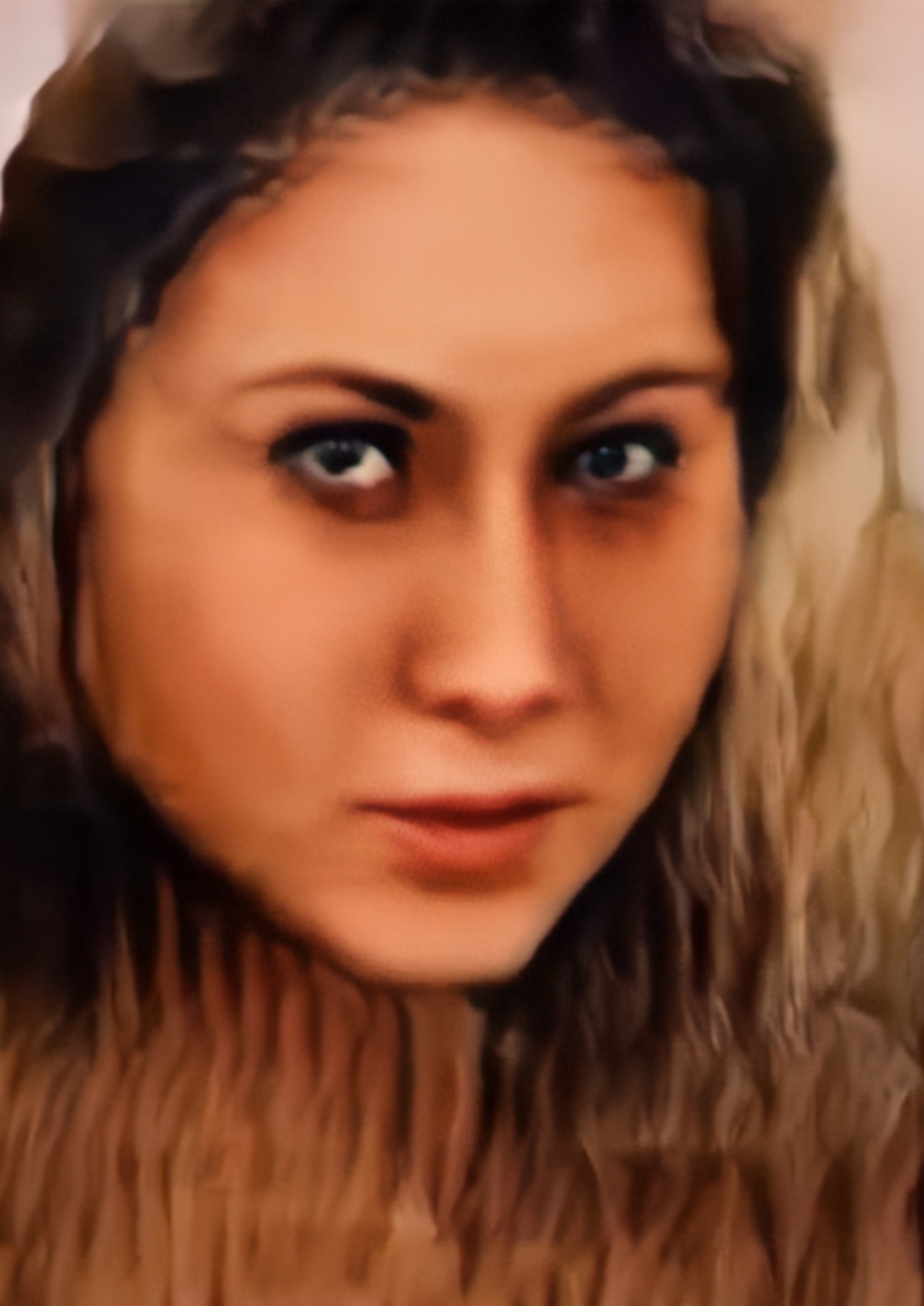
FILE SÃO PAULO 2025: SYNTHETIKA – Mario Klingemann
Freeda Beast
Mario Klingemann
FILE SÃO PAULO 2025: SYNTHETIKA – Arte e Tecnologia
Festival Internacional de Linguagem Eletrônica
Freeda Beast – Alemanha
Dançando pelo Espaço Latente
Mario Klingemann ama dançar — não profissionalmente — mas, sempre que o faz, tenta traduzir sua interpretação do movimento e dos gestos da música para o espaço multidimensional de seu corpo. Trabalhando com os espaços latentes de redes neurais, particularmente com GANs, encontrou um processo paralelo: traduzir som em imagens. A dança torna a música visível por meio do movimento; sua arte tenta fazer o mesmo com inteligência artificial, permitindo que a música molde imagens. As três obras em vídeo apresentadas — Freeda Beast — Bringing Things to an End (GAN generated beta) (2017), The Noise of Art (2020) e Liberation (2020) — são experimentos nessa tradução, cada uma criada de uma só vez por um código escrito por ele, que responde ao ritmo e ao clima das músicas. Bringing Things to an End, provavelmente um dos primeiros videoclipes totalmente gerados por IA no mundo, utiliza um modelo de geração de rostos treinado pelo artista.
Mario Klingemann é um artista e cético com uma mente curiosa. Seu trabalho explora a interseção entre arte e tecnologia, com foco em inteligência artificial, aprendizado profundo e estruturas algorítmicas, investigando continuamente os mecanismos internos tanto das máquinas quanto do processo criativo.
BIO
Mario Klingemann é um artista e cético com uma mente curiosa. Seu trabalho explora a interseção entre arte e tecnologia, com foco em inteligência artificial, aprendizado profundo e estruturas algorítmicas, investigando continuamente os mecanismos internos tanto das máquinas quanto do processo criativo.
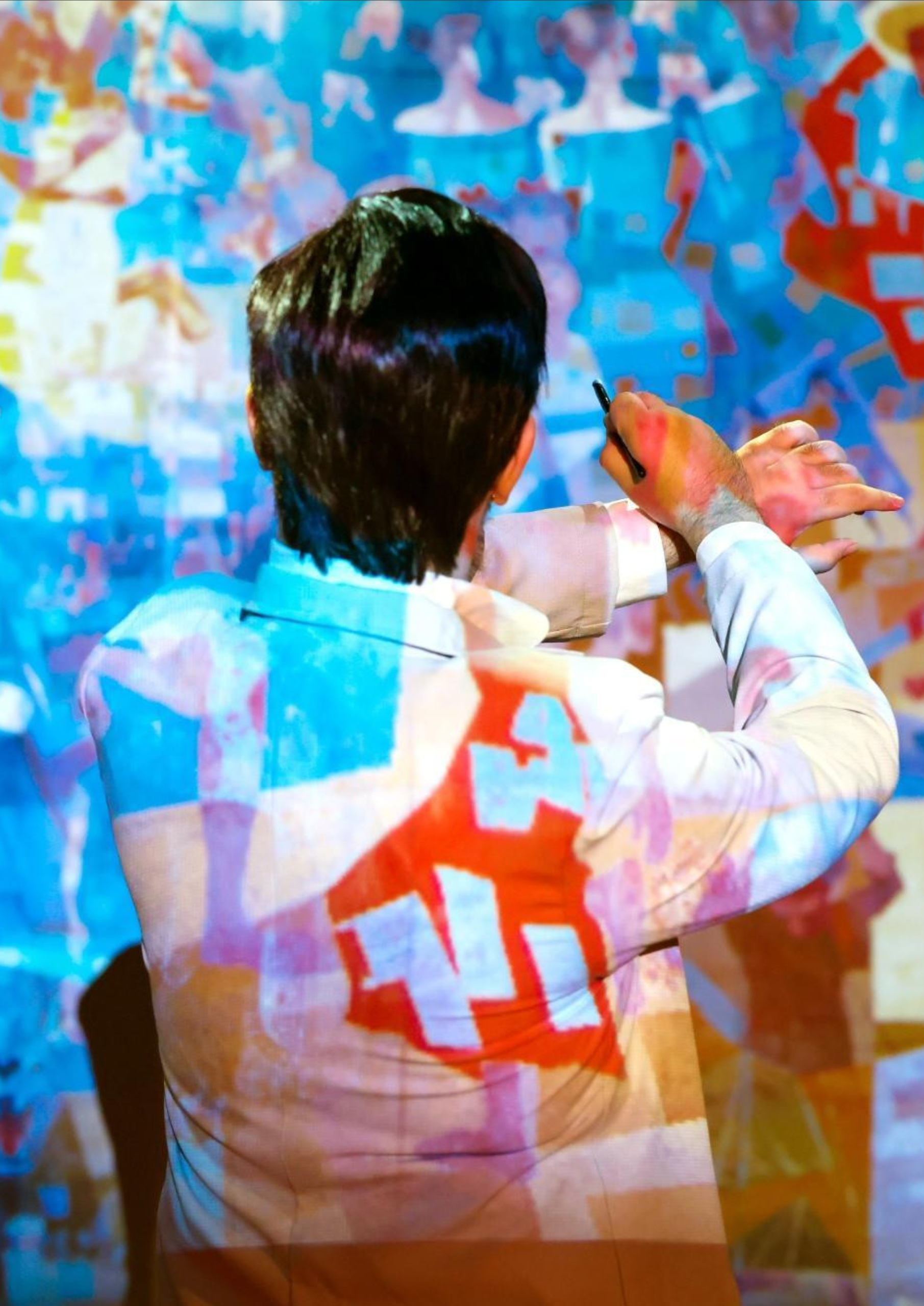
FILE SÃO PAULO 2025: SYNTHETIKA – Dimitri Lomonaco
Vídeo ao vivo: imagem, espaço e interatividade
Dimitri Lomonaco
FILE SÃO PAULO 2025: SYNTHETIKA – Arte e Tecnologia
Festival Internacional de Linguagem Eletrônica
Vídeo ao vivo: imagem, espaço e interatividade – Brasil
A oficina combina artes visuais e novas mídias, na medida em que se utiliza da tecnologia de video mapping, ou projeção mapeada, como ferramenta para composições visuais no espaço físico. Para além das telas, a imagem projetada pode interferir nas mais diversas superfícies (arquitetura, objetos, corpo etc.), tornando-as telas de vídeo dinâmicas. Assim, o vídeo deixa de ser um retângulo plano e cria a ilusão de ser um elemento interativo, incorporando-se ao espaço.
BIO
Dimitri Lomonaco é um artista-pesquisador da imagem e de tecnologias digitais no campo do audiovisual expandido. Integrando design, cenografia e iluminação, desenvolve projetos de arte e tecnologia, criando experiências visuais imersivas e sensíveis. Atualmente é mestrando no programa de Artes Visuais da ECA-USP e integrante dos grupos de pesquisa em arte e tecnologia Realidades (USP) e GIIP (UNESP).
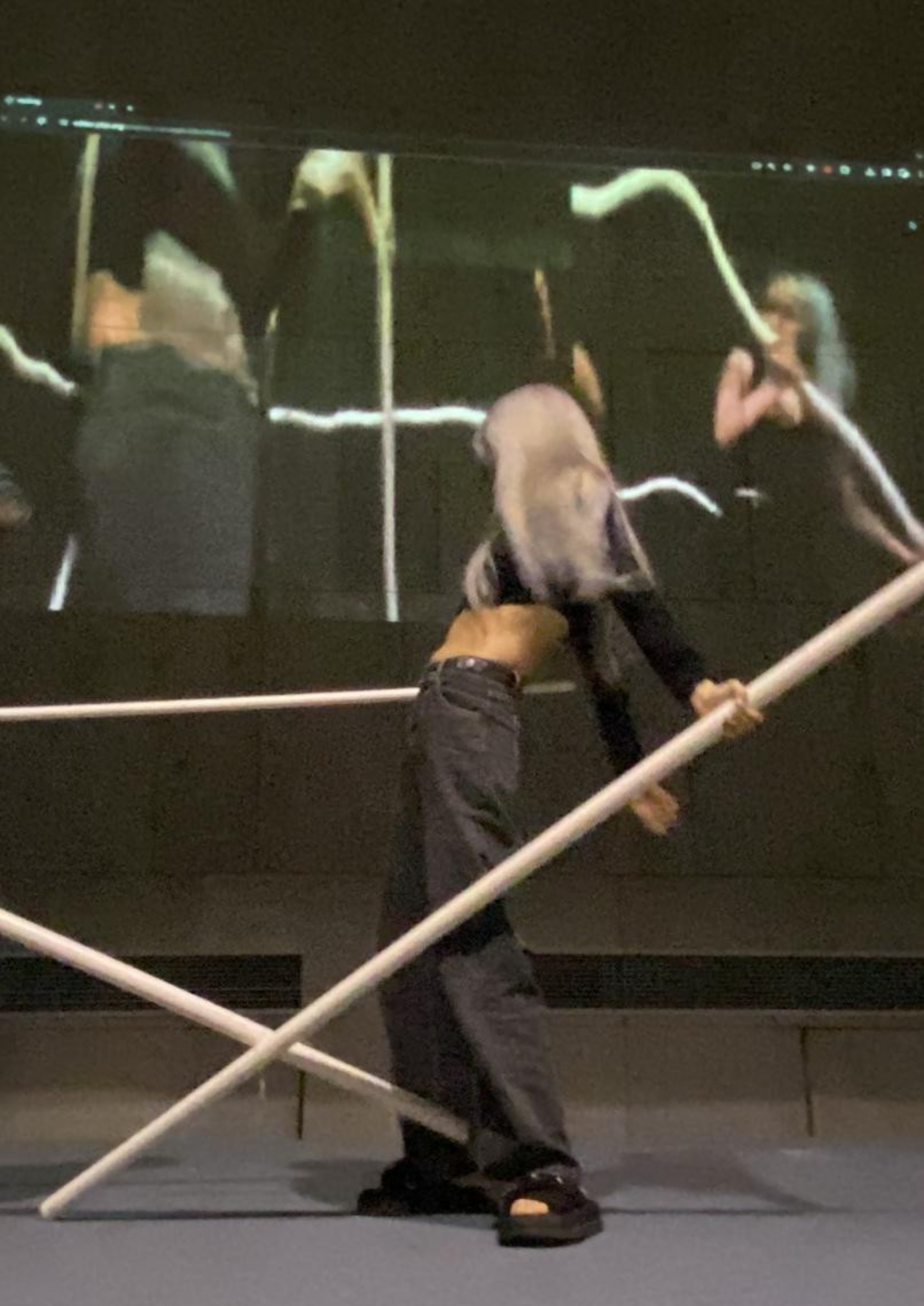
FILE SÃO PAULO 2025: SYNTHETIKA – Clarissa Ribeiro; Rewa Wright; Jill Scott; Leona Machado
P5.js na Visualização de Dados em Performance: A Tecnoética da Inclusão e do Pertencimento
Clarissa Ribeiro; Rewa Wright; Jill Scott; Leona Machado
FILE São Paulo 2025 | Workshop
Festival Internacional de Linguagem Eletrônica
P5.js na Visualização de Dados em Performance: A Tecnoética da Inclusão e do Pertencimento – Brasil
O FEMnomenal Art Collective oferece uma oficina performativa que explora o ecofeminismo e a desconstrução da divisão entre humano e não-humano — dicotomia central da modernidade colonial. Por meio de atividades colaborativas, visualização performativa de dados e performances interativas, a oficina aborda empoderamento feminino, ideologias alternativas de crescimento e estéticas tecnoéticas. As participantes criam visuais generativos e realizam atos simbólicos que promovem diálogos sobre cuidado, equidade e transformação.
BIO
O coletivo é formado pelas artistas e pesquisadoras Dra. Jill Scott, Dra. Clarissa Ribeiro e Dra. Rewa Wright. Juntas, exploram interseções entre arte, ciência e justiça social por meio de práticas criativas que desafiam fronteiras convencionais.
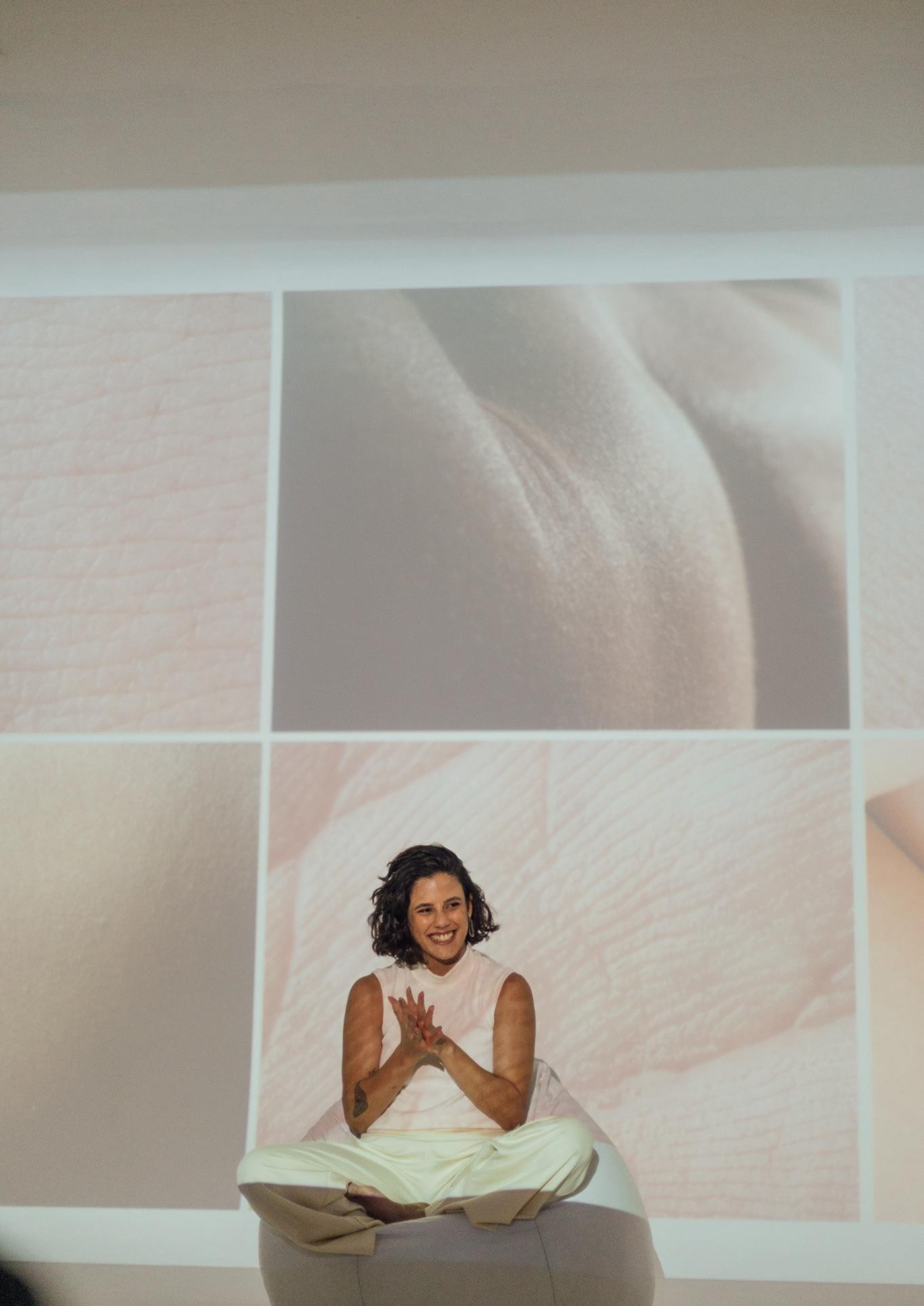
FILE SÃO PAULO 2025: SYNTHETIKA – Viviane da Silva Tavares
(Dis)connection
Viviane da Silva Tavares
FILE SÃO PAULO 2025: SYNTHETIKA – Art and Technology – WORKSHOP
Electronic Language International Festival
(Dis)connection – Brazil
The (Dis)connection workshop is an immersive in-person experience that invites participants to explore the impact of technology on their bodies and perceptions. Using high-quality projections and somatic practices, the workshop encourages conscious digital disconnection, offering tools for a healthier and more balanced relationship with technology.
BIO
Viviane Tavares is a researcher and digital wellness expert, focusing on the intersection of the body, technology, and design. With over 10 years of experience in the technology industry developing digital products, she uses contemporary dance and somatic practices to advocate for conscious disconnection in our hyperconnected world.
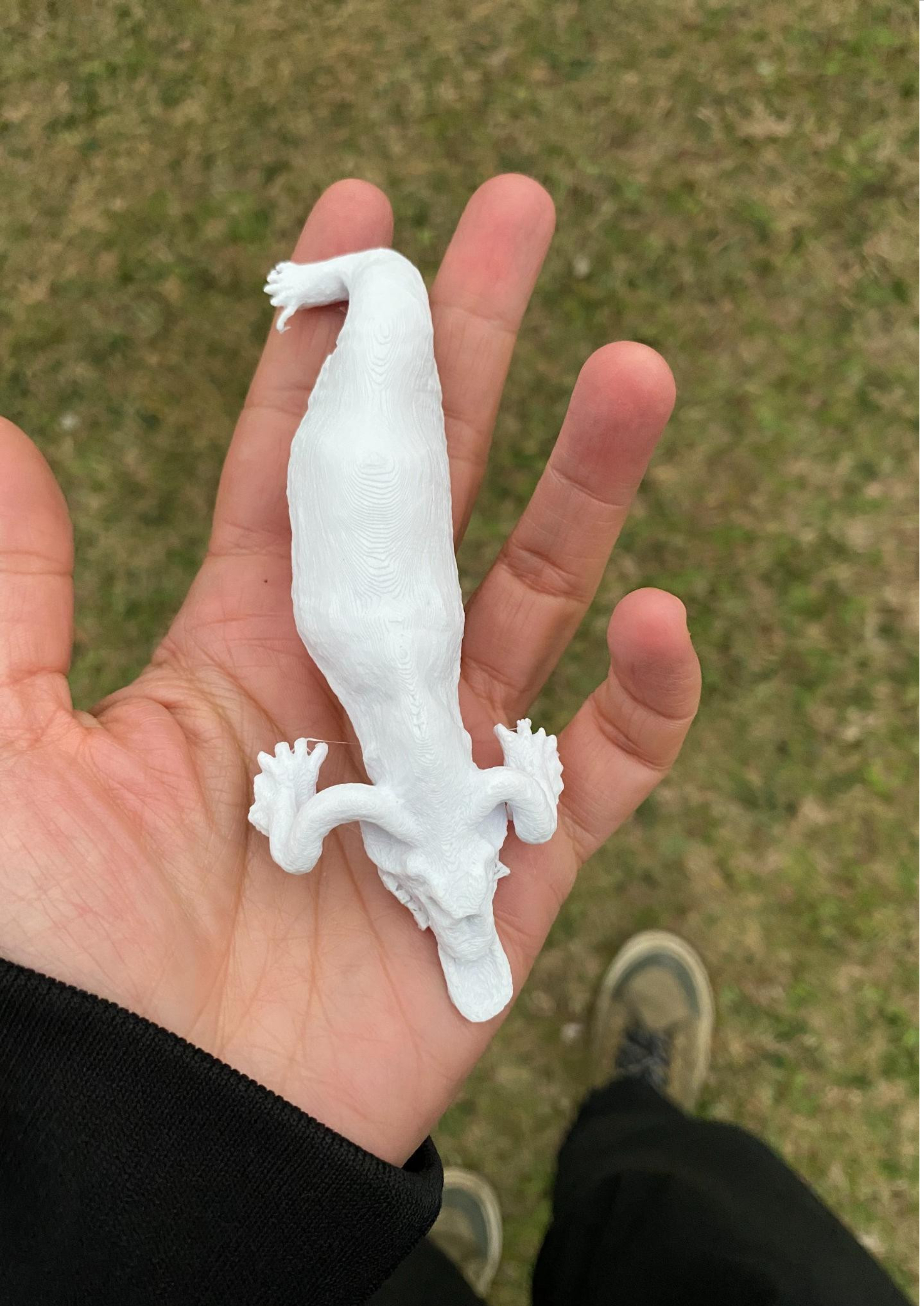
FILE SÃO PAULO 2025: SYNTHETIKA – Clarissa Ribeiro
Afterlives-Chimeras: Wetland Carbonized Memories
Clarissa Ribeiro
FILE SÃO PAULO 2025: SYNTHETIKA – Art and Technology – WORKSHOP
Electronic Language International Festival
Afterlives-Chimeras: Wetland Carbonized Memories – Brazil
Afterlives-Chimeras: Wetland Carbonized Memories reimagines ancient Egyptian animal mummification through the lens of ecological tragedy. Inspired by Brazilian swamps and the destruction of wildlife caused by agribusiness, mining, and the steel industry, the project uses AI (Krea.AI and Meshy.AI) to create hybrid creatures from images of charred animals. The chimeras, 3D printed with PLA, reminiscent of mummified linen, symbolize loss, transformation, and the urgency of ecological balance.
BIO
Clarissa Ribeiro is an Assistant Professor of Visual Arts at USP and former Director of Roy Ascott’s Technoetic Arts Studio in Shanghai. A PhD holder with a Fulbright postdoctoral degree, she intersects art, science, and technology in morphogenetic practices, adopting animism as a way to navigate ecologies as cosmologies.
